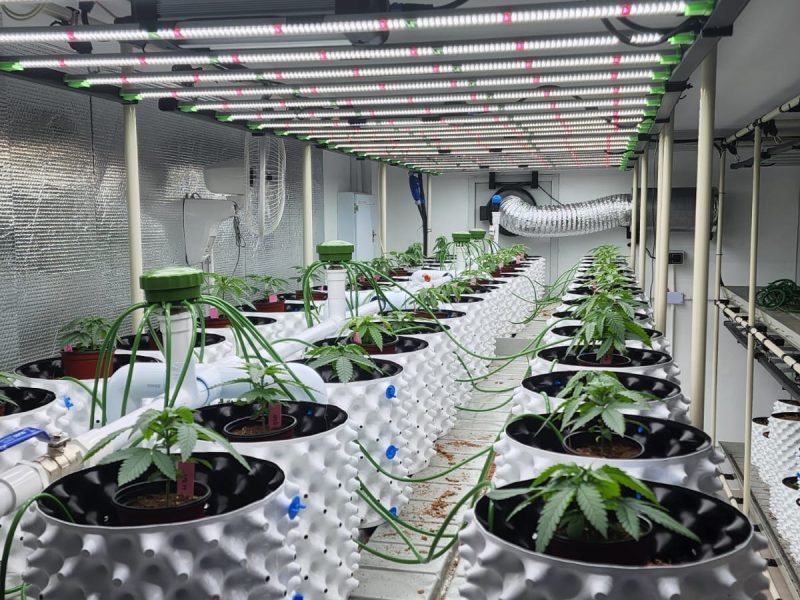What is PPFD Value and Why Does It Matter?
PPFD, or Photosynthetic Photon Flux Density, is a crucial metric in the world of indoor cultivation. It specifically measures the amount of light that actually reaches your plants within the PAR (Photosynthetically Active Radiation) zone—the region essential for photosynthesis. Imagine it as the number of photosynthetically active photons falling on a given surface each second.


PPFD in LED Lights: Shedding Light on the Basics
When it comes to LED grow lights, understanding PPFD is paramount. It still measures the light that arrives at the crop canopy in the PAR zone, determining the number of photosynthetically active photons reaching your plants each second. This metric is vital for optimizing your indoor cultivation efforts.

Optimal PPFD Levels for Different Growth Stages
To maximize your plant’s potential, knowing the ideal PPFD levels for each growth stage is key. Aim for 100-200 µmol/m2/S during the seedling stage, 200-500 µmol/m2/S for vegetative growth, and 500-600 µmol/m2/S during flowering and fruiting.
Minimum PPFD for Photosynthesis: A Crucial Threshold
For photosynthesis to occur, plants require a minimum PPFD. It varies depending on factors like shade tolerance, with low shade plants needing a minimum of 230 μmol/m2/s for 12 hours to obtain 10 mol PAR/day.
PPFD and Its Relationship with Distance
The intensity of light, represented by PPFD or PAR, changes with the distance from the light source. Understanding this relationship is crucial for effective indoor cultivation. Modifying the distance alters the light intensity and coverage a plant receives.

PPFD vs. Light Intensity: Unraveling the Connection
While both PPFD and Lux measure light intensity, they have nuances. Lux gauges visible light brightness universally, while PPFD specifically assesses light suitable for active photosynthesis in plants. Knowing the distinction helps in optimizing your lighting strategy.
Balancing Light Intensity for Optimal Growth
Contrary to the belief that more light is always better, excessive light can be detrimental. Plants need a balance of light and darkness for proper development. Striking the right balance, typically not exceeding 16 hours of light exposure per day, ensures healthy growth.
Differentiating PPFD and PAR: A Key Clarification
Understanding the difference between PAR (Photosynthetically Active Radiation) and PPFD is crucial. PAR refers to the range of light wavelengths needed for photosynthesis, while PPFD measures the actual amount of PAR hitting a specific location and time.
Calculating PPFD: The Science Behind It
The mathematical calculation of PPFD involves wavelength (λ) in meters. This value helps gauge the photosynthetic photon flux density (PPFD) in micromoles per second per square meter (μmol/s-m2) for a given light source.
Controlling PPFD Levels in Your Grow Room
If you find your PPFD levels needing adjustment, there are practical steps. Changing the distance between the light and plants or adjusting the LED brightness using its knob are effective ways to control PPFD.
Addressing Low PPFD Levels: Practical Solutions
When faced with low PPFD levels, the remedy involves tweaking the light height, considering supplemental lighting, or opting for higher-intensity LED grow lights. These adjustments ensure your plants receive the optimal amount of light for robust growth.
LED Grow Lights for PPFD Optimization: Key Considerations
Not all LED grow lights are created equal. To optimize PPFD, look for grow lights with a balanced spectrum, high light output, and adjustable features. Choosing the right LED grow lights like Flexstar grow lighting ensures tailored optimization based on your plants’ specific needs.
Conclusion
In conclusion, a profound understanding of PPFD in the realm of LED grow lights serves as the foundation for successful indoor cultivation. From deciphering its intricacies to making practical adjustments, this knowledge empowers you to create an environment where your plants not only survive but flourish vibrantly. So, armed with the insights into PPFD, venture into the realm of LED grow lights, and cultivate your botanical sanctuary with confidence and finesse.

